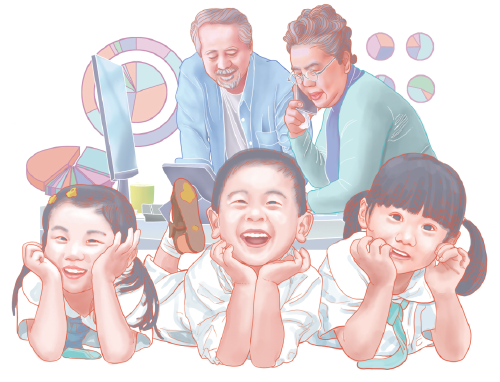Demography key to sustainable growth
By Armida Salsiah Alisjahbana and Natalia Kanem | CHINA DAILY | Updated: 2023-11-09 07:16

Asia and the Pacific is an economic powerhouse, fuelled by its vibrant and diverse population. Comprising 60 percent of the world's population, the Asia-Pacific region is bursting with both a wealth of experience and untapped potential. Exciting advancements have been made in education, health care, including sexual and reproductive health, jobs and sustainable development in the region. Yet there is a catch: this progress has not been evenly distributed. In fact, inequity pervades the region, especially within individual countries.
Women still lose their lives during childbirth at alarming rates in many countries of the region. And in many countries we have seen limited progress in reducing maternal mortality in the past decade. In several countries, less than 30 percent of women of reproductive age use contraception. Unemployment rates among young women remain high, reaching up to 25 percent in some places. Also, women are still struggling for a seat at the political table, with less than a quarter of national parliamentary seats being occupied by women in 35 countries across the region, with progress toward gender equality and women's empowerment being sluggish, creating a roadblock to sustainable development.
The region is particularly susceptible to the effects of climate change and environmental degradation, with natural disasters claiming 2 million lives since 1970. Financial losses from these calamities add up to $924 billion every year, eating up nearly 3 percent of the region's GDP. With people's environmental footprint expanding dramatically, the region's greenhouse gas emissions have risen by 54 percent since 1990, largely due to the energy and agricultural sectors.
Population aging is another mega-trend affecting this part of the world. More people are enjoying longer and healthier lives. In this new reality, we need policies that adapt to these shifts and invest in every stage of life. Rather than perceiving elderly people as a drain on resources, we should recognize them as individuals with human rights who make important contributions to society in various ways all the time. The same applies to persons with disabilities, migrants and other groups of people who have much to contribute, yet too often face stigma and discrimination. So let us build societies for people of all abilities and ages.
More than 60 percent of the population in the Asia-Pacific region has access to the internet, which has turbocharged development across many sectors. Nevertheless, these technological advances bring new challenges, from the digital divide between the haves and the have-nots, to privacy violations and a disturbing rise in technology-facilitated gender-based violence.
While it is important that we celebrate the region's many achievements, we must simultaneously confront its population- and development-related challenges. We have a unique opportunity to do so as we mark 60 years since the first Asian and Pacific Population Conference and 30 years since the International Conference on Population and Development — two important milestones on the path toward sustainable progress.
At the midpoint of the 2030 Agenda for Sustainable Development, as countries seek to accelerate action toward achieving our global goals, we urgently need comprehensive, forward-thinking, intergenerational approaches to harness the opportunities of population dynamics for sustainable development. To be effective, such approaches must be based on individual human rights and rooted in evidence and data.
Innovative solutions, financing and political commitment through inclusive partnerships are our path forward. Let us ensure young and older persons have a voice in decision-making and in designing solutions, and tap into the goldmine of shared knowledge and proven methods we have built over the past few decades. Investing in people, through improved health, education and training, while providing social protection for all to retain development gains, lays the foundation for inclusive, just and sustainable societies. It is also our route to achieving the Sustainable Development Goals.
The Seventh Asian and Pacific Population Conference being held this week is the perfect launchpad for collective action. Governments, civil society, young people and others can come together and make a real difference, building on their collective investments and successes. Together, we can protect people and the planet, and ensure prosperity for all, now and in the future.
Let us refocus our actions to ensure human rights and choices for everyone, driving us closer to peace and a sustainable future for this generation and those that follow.
Armida Salsiah Alisjahbana is undersecretary-general of the United Nations and executive secretary of the Economic and Social Commission for Asia and the Pacific; and Natalia Kanem is executive director of the United Nations Population Fund.
The views don't necessarily reflect those of China Daily.
If you have a specific expertise, or would like to share your thought about our stories, then send us your writings at opinion@chinadaily.com.cn, and comment@chinadaily.com.cn.
























